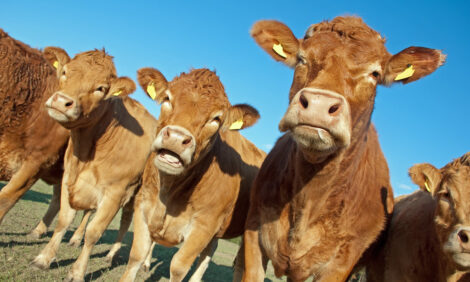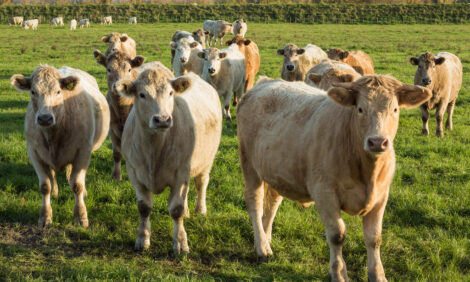



2014 Massive Year for New Zealand Red Meat Industry
NEW ZEALAND - The New Zealand farmers’ group, Federated Farmers, is looking at ways to reform New Zealand’s $6 billion red meat industry.“As red-meat industry revenues are worth around 35 Avatar movies each year and generates some 80 times the annual revenue of Xero, you can say its future is fairly important to every Kiwi,” said Jeanette Maxwell, Federated Farmers Meat & Fibre spokesperson.
“2014 promises to be a massive year for the red meat industry and for wool too. Just before Christmas, we got the great news that Wellington-based The Formary’s breakthrough mid-micron/rice straw fabric is moving into commercial production.
“While our options paper for red-meat reform advances three broad options, the solutions within each are more like a ‘pick and mix’. We are asking our members for their feedback so that Federated Farmers Meat & Fibre can write its strategy where reform will be central.
“Everything we do at Federated Farmers will be informed by what our members want.
“Arguably, the Processor Focused options for red meat reform will generate much discussion.
“There is a push by some in the industry to merge the cooperatives, something that’s much easier said than done. If the thinking is ‘just copy Fonterra’ then it will not succeed. To work, any merger needs a reassessment of the entire industry but especially its capital structures.
“We also look at Tradable Processing Rights which is similar in concept to quota management in fisheries. It would need legislation and there are some fishhooks, but if they can be worked through, it could help to reduce overcapacity in the industry.
“We also raise the option of Toll Processing which separates out processing and marketing.
“Federated Farmers is also advancing a truly innovative concept that’s never been discussed before in New Zealand. It is called total value transparency.
“Again it would require legislation but Federated Farmers is taken by the Uruguayan model, which is widely regarded as having the best meat information systems in the world.
“We feel total value transparency merits discussion as it could drive a material change in behaviours at the marketing end. It is one means to improve coordination, collaboration and in-market behaviour while generating value and demonstrating where that value is being added.
“Our Behaviour Focused option reflects that the dairy industry was static until the industry, from the grassroots up, decisively reshaped it for the better.
“It is about behavioural change to shift the focus from procurement to what the market wants. This involves a matching of suppliers with companies that share similar philosophies.
“We know from our research that we have within our industry mutual cultural and business alignment. This is something to build upon.
“We also explore the positive role stock agents could play and that’s a very different outlook on them from that reached by others.
“The third section discusses Marketing Focused options. We look at things that are being discussed in the industry right now, from the WTO-unfriendly single desk model to more realistic in-market collaboration by our exporters.
“Being marketing focused could include multiple marketing companies involving strong producer and customer/consumer relationships. This option is dependent upon toll processing indicating how interrelated our options are.
“A twist on market collaboration is for an ANZAC approach, where Australia and New Zealand unite to achieve greater scale while improving research investment and market development.
“Going larger still, we could see an alignment between the Northern and Southern hemispheres to match seasonality of supply. This could help to keep red meat products on the shelves against competing meat and non-meat proteins.
“While not an option in our paper, I need to mention how water storage and irrigation could be transformational. The current debate is too dairy-centric and if we want a globally competitive red-meat industry then we need reliable water to reshape how our farm businesses operate.
“It is now up to farmers and our members for what they want our industry to look like in five, 10 and 20 years’ time. If we genuinely believe it is time for a change and I believe we do, then change will happen,” Mrs. Maxwell concluded.
TheCattleSite News Desk


